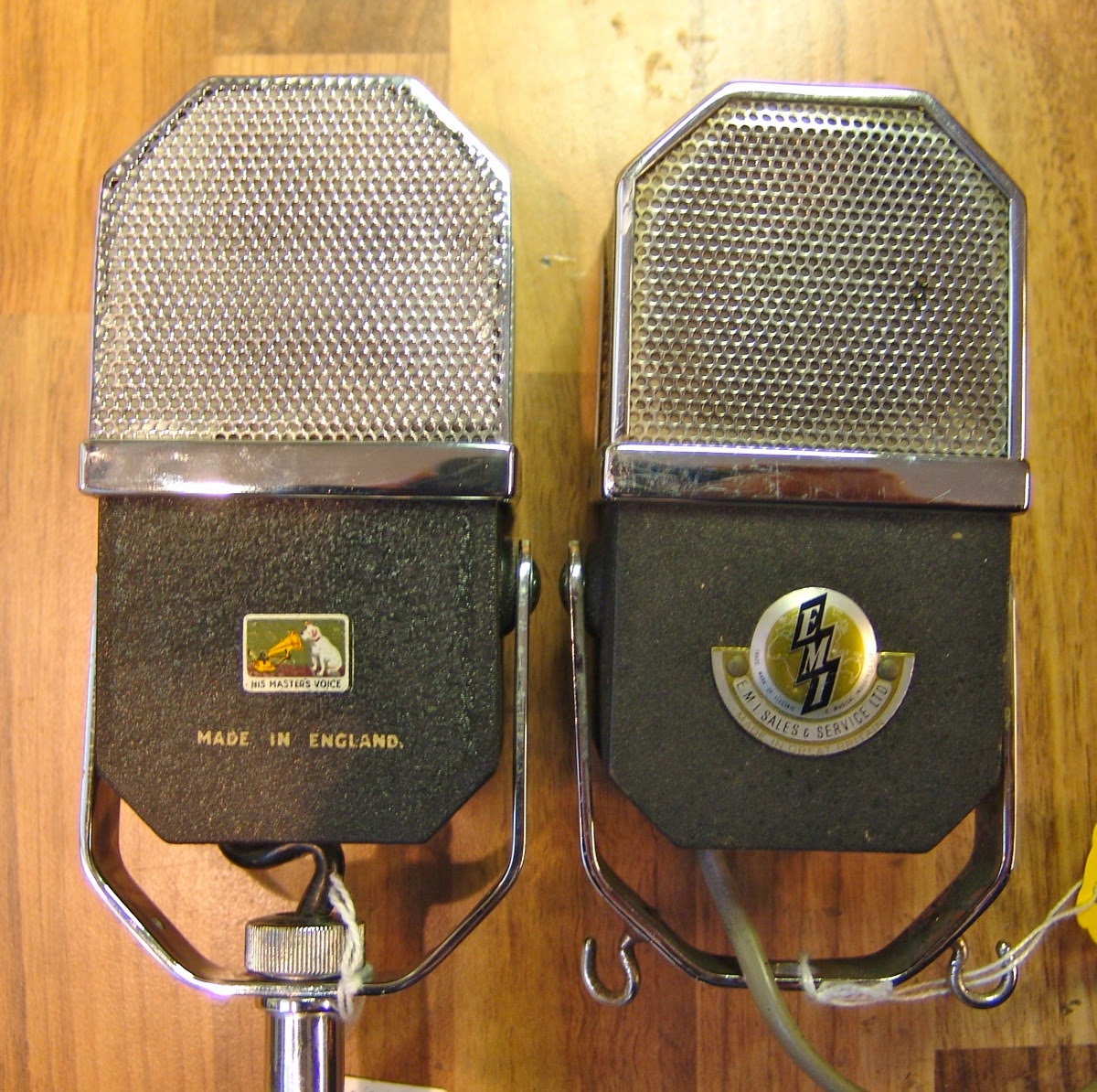Introduction
Update 8th March 2015
Several kind and knowledgable readers have sent in links and articles with dates and model numbers. I have added these where possible. Thanks to all!
Type 1
The BBC technical team reviewed this mic in 1947 and applied their usual exacting standards, rejecting the mic for broadcast use. But as usual the benchmark mic for comparison was the BBC Marconi AX model, which cost many times more, and in fact these mics can sound warm and rich, with an overtly vintage tone.
The Type 1 mic was succeeded by the type 2 or “Pitchfork” model, which is much smaller and has a completely new motor design. This model seems to date from the early 1950s and was available in different colours with different mounting options.
Most of these models have a 600 ohm output, and give a full well balanced sound. This is my favourite figure-8 Tannoy, partly because this was the first Tannoy mic that I owned, but also because it has a good response and a very usable signal / noise output.
The type 2 motor is simple but nicely made, with two tapered magnets either side of the ribbon, and the adjustable pole pieces allow one to set the ribbon tension.
Update – this model has been identified as the MR425, and it was briefly mentioned in Wireless World in May 1952:
The magnets in these mics are made from a ceramic material which allows a smaller, lighter microphone than its predecessors.
Update: This microphone has been identified as the Tannoy Slendalyne model which appeared in Wireless world in June 1962:
In my next post I will describe Tannoy’s cardioid ribbon mics.
Stay tuned!





































